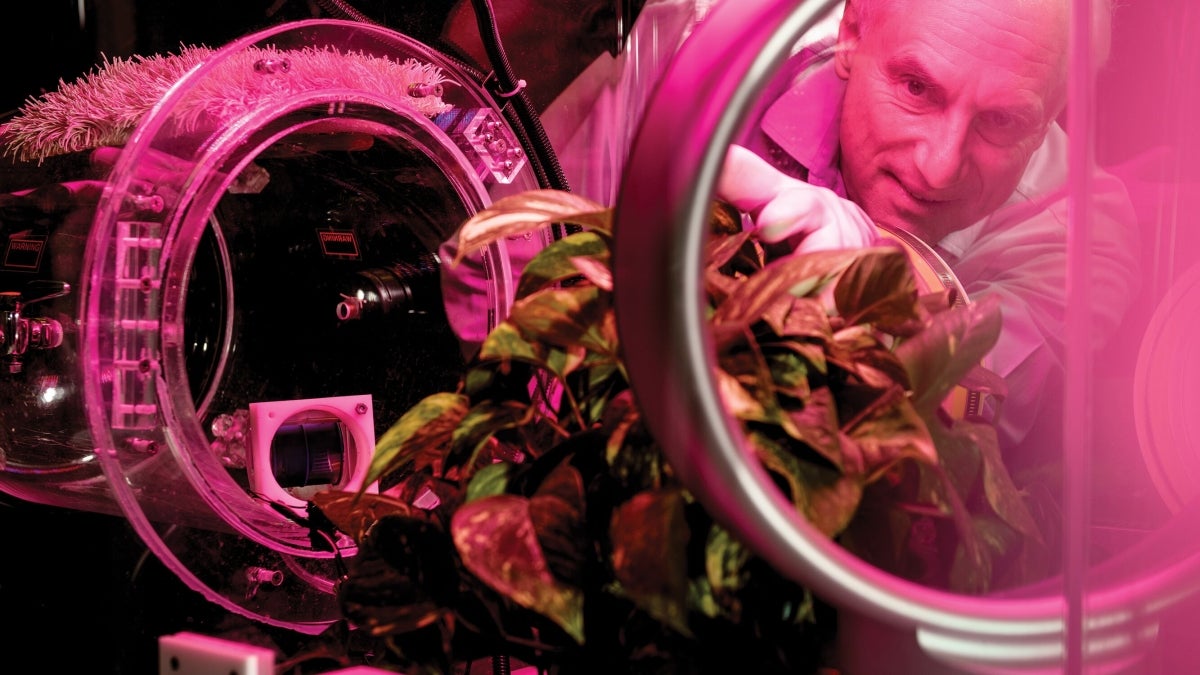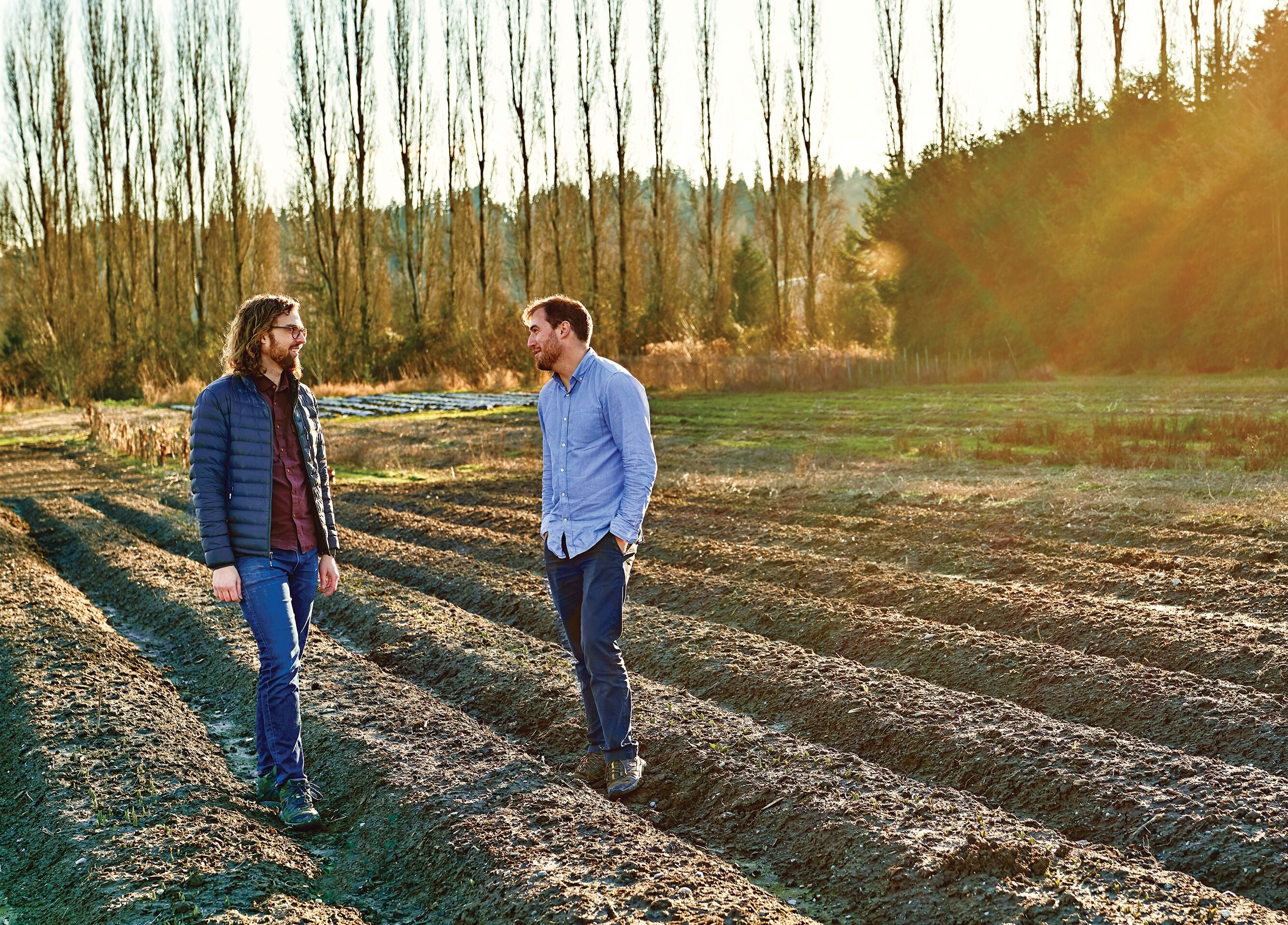In the 1990s, theoretical physicist Klaus Lackner had an idea. Was it possible to build a contraption that physically sucked greenhouse gases out of the atmosphere?
At the time, the idea was radical. Some people thought it was nuts.
Two decades later, many of the experts have come around to Lackner’s view. Pulling carbon from the air is now seen as crucial, and Lackner has created such a machine. ASU has supported the vision, naming Lackner director of the Center for Negative Carbon Emissions at the university’s Ira A. Fulton Schools of Engineering, where he’s honing the technology. But so far, there are only a handful of other efforts to build carbon-sucking machines.
Which gave a group of ASU grads another idea. Instead of building the new technology, how about creating a marketplace that would incentivize carbon removal, whether by Lacknerian machines or some other method? Sure, it’s still pretty radical, considering no one has done this before. But nuts? Hardly.
In 2018, the grads — Paul Gambill, Jaycen Horton and Ross Kenyon, along with Christophe Jospe, who worked for Lackner at CNCE — founded Nori. The Seattle-based company is flipping some basic ideas about climate change mitigation on their head. Instead of aiming at lowering CO2 emissions, Nori focuses instead on Lackner’s notion of pulling out the carbon that’s already in the atmosphere. Instead of, say, taxing those who put CO2 into the air, they want to pay those who remove it.
“It’s a way of using markets to drive change,” Jospe explained. “We’re able to monetize what hasn’t previously been monetized.”
They like to call themselves “used-carbon salesmen” and they’re finding ways to do what seems unthinkable: making CO2 a valuable commodity.
ASU alumnus Paul Gambill (left) and Christophe Jospe are part of the founders at Nori, which is working with farmers on removing CO2 from the atmosphere and putting it back into the earth. The no-till process — regenerative agriculture or "carbon farming" — requires the planting of cover crops. "The potential," said Jospe, "is vast." Photo by Inti St. Clair
Carbon farming
Carbon dioxide is a colorless, odorless gas that’s a byproduct of burning fossil fuels, among other things. Humans put more than 36 billion metric tons (MO2) of the stuff into the atmosphere each year, trapping heat and causing Earth’s temperature to rise.
“Even if we turned off all emissions worldwide tomorrow, we’d still have far too much CO2 and other greenhouse gases in the atmosphere, and we’d still get some of the catastrophic effects,” Gambill said. “We have to take action as soon as possible.”
In fact, the deployment of carbon capture and storage technology to absorb remaining fossil fuel emissions was one recommendation last year by scientists convened by the United Nations to avoid catastrophic damage from climate change by 2050.
The way the team at Nori views it, CO2 is a waste product, and it should be treated like other waste products. We don’t throw our trash out the window, and we shouldn’t simply fling our greenhouse gas into the atmosphere, either. We need a system to pick it up, just like our system of trash collection, and a market so that those who do the removal get paid for it. That’s where Nori comes in.
“We’re building a marketplace that makes it as simple as possible,” Gambill said. He wants to create a kind of commodity market for carbon, where the price is driven by market demand. Lackner liked the concept so much, he signed on as an adviser.
“In a way, it democratizes the problem,” Lackner said, by allowing everyone to take responsibility for greenhouse gases.
Video by Ken Fagan/ASU Now
Through the Nori interface, people who are able to remove carbon from the atmosphere can easily connect with people who are willing to pay for it.
“Nori is trying to create a new model for exchange,” said Michael Dalrymple, ASU’s director of University Sustainability Practices.
In traditional carbon markets, companies and organizations indirectly purchase offsets. ASU does this with a community impact twist. For example, Dalrymple explained ASU collects an $8 carbon fee on every round trip of air travel by faculty and staff. ASU then buys “community bundle” offsets from Urban Offsets, consisting partly of carbon offsets purchased from projects listed on offset registries. Urban Offsets directs some funds to the cities of Phoenix and Tempe to help defray the costs of planting urban trees — increasing shade, reducing heat islands and cleaning the air. In return, ASU gets additional offsets over time for carbon sequestered by those trees.
The Nori team decided to take a direct approach with some unlikely allies: farmers.
The excess CO2 in the atmosphere was originally in the ground, bound up in oil, coal or natural gas. Also, plants — whether they’re grass or vegetables or trees — pull CO2 out of the air through photosynthesis. To Gambill, all this makes the problem straightforward: “We should just take (the greenhouse gases) out of the atmosphere and put them back into the earth.”
In recent years, farmers and scientists have learned that certain farming methods can help ensure that CO2 pulled in by plants goes back into the ground and stays there. It requires forgoing tilling, planting cover crops, liberal use of compost and more. The soil gets healthier through this process, which means over time, the plants get healthier, too, and that means more money for the farmer.
It’s called regenerative agriculture, or even “carbon farming,” and some farmers have already made the transition. The problem is, the soil improvements take time, and upfront costs can be significant. Which brings us back to Nori. Through its marketplace, farmers using these methods can get credit for each ton of carbon they sequester in the soil. They then place those credits for sale in the Nori marketplace.
When the marketplace opens for business later this year, they aim to have enrolled enough farmers to sequester a million metric tons of carbon per year, Gambill says. That’s equivalent to more than 112 million gallons of consumed gasoline.
“The potential,” Jospe believes, “is vast.”
Klaus Lackner pioneered direct air capture, using artificial trees to remove carbon dioxide from the air. Made from a plastic resin, Lackner's artificial trees are 1,000 times more efficient than natural trees in reducing carbon emissions. Photo by Jarod Opperman/ASU
Carbon gold rush
There are bound to be skeptics. They say it’s hard to measure carbon that has been isolated in the ground. True. Besides, there’s only so much farmers can put there. And there are hurdles to making it stay there.
But Gambill, Jospe, Horton and Kenyon are pulling every thread, working with the experts to ensure public acceptance of the marketplace. Also, they’re envisioning something much bigger than farmers. It requires the kind of thinking he developed at ASU.
Gambill studied computer systems engineering. It taught him to think in terms of solving problems, to “look at large, complex systems, trying to understand the boundaries, the potential inputs and outputs.”
Climate change is an environmental problem, but it’s also an economic problem, a social problem and an engineering problem. Gambill and Horton both worked at ASU’s Decision Theater, which let them watch how societal questions play out in real life. Jospe got quite the education working for Lackner.
“It’s not a coincidence this idea came from people who consider themselves Sun Devils,” said Jospe.
The team is confident it will go beyond farming. Gambill likens it to Apple, when it opened the first app store. There wasn’t much for sale then, but Apple was certain that people would start dreaming up apps to fill the shelves. We all know how that turned out. Similarly, the Nori team believes if there’s money to be made, people will be motivated to making more carbon-sucking solutions.
“We’re creating a space where creativity can flourish,” Gambill said. “It’s going to be a gold rush to monetize carbon removal. We think people are going to do some really cool things.”
Written by Maureen O’Hagan, an award-winning journalist who has covered an array of subjects for The Washington Post and Seattle Times and has been a finalist for the Pulitzer Prize in Public Service. This story originally appeared in the spring 2019 issue of ASU Thrive magazine.
Top photo: Klaus Lackner, a pioneer in carbon capture, views a greenhouse that will be fed carbon dioxide from prototype materials at his lab in ASU's Center for Negative Carbon Emissions. Companies are building on his ideas to achieve climate goals. Photo by Jarod Opperman/ASU
More Environment and sustainability

Driving green desalination
Wilderness survival TV show hosts, pirates and water treatment researchers agree on one thing: Most natural water sources are not safe for drinking. Among the many potential risks is the high salt…

ASU preservation facility serves as test bed for rooftop heat mitigation
A roof coating that uses thermal energy storage materials from Arizona State University spinout EnKoat is halting the heat in several ASU buildings — including a section of the university’s largest…

ASU Carbon Summit displays sustainability leadership, collaboration and ... electric motorcycles
This month, a student-led initiative brought government officials, entrepreneurs and nongovernmental organizations under one roof to discuss sustainable carbon solutions. The annual Carbon…


